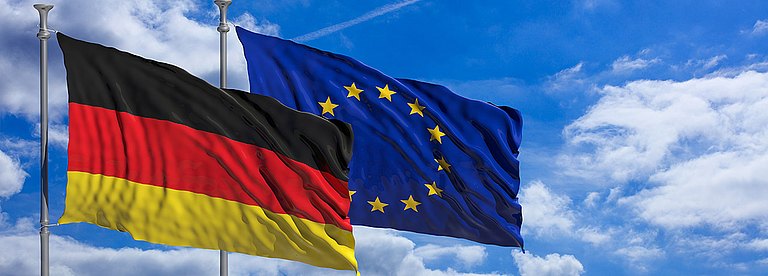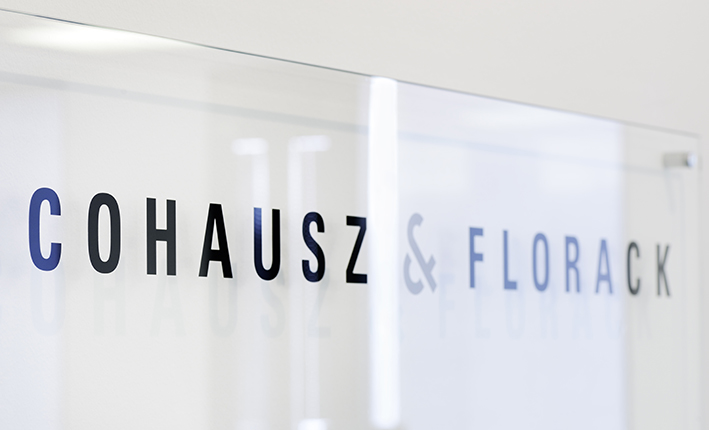Patent term extensions via supplementary protection certificates (SPCs) play a key role in the protection of drugs and plant protection products in Europe. Understanding their complex legal framework is just as crucial. As the European Court of Justice (ECJ) has seen an overwhelming number of referrals regarding patent term extensions in recent years, the interpretation of the law in this area has become increasingly complex. This chapter provides upto-date answers to the most frequently asked questions on SPCs and elucidates the impact of the entry into force of the Agreement on the Unified Patent Court (UPC) on SPCs.
What is an SPC?
SPCs can provide a patent term extension of up to five years and compensate patent owners for the regulatory delays caused by marketing authorisation procedures for medicinal and plant protection products.
For which countries can SPCs be obtained?
SPCs for medicinal products in the European Union are governed by EU Regulation (ECC) No. 1768/92, which came into force on 2 January 1993 and was codified and replaced by EU Regulation (EC) No. 469/2009. A similar legislative framework is in place for SPCs for plant protection products. These regulations apply in all EU member states. Of the non-EU countries for which European patents can be granted, only some (eg, Switzerland, but not Turkey) have SPC legislation in place. Only SPCs within the European Union are discussed here.
What is the duration of an SPC?
SPCs extend the patent term for a period that is equal to the time that elapsed between filing the patent application and the first EU marketing authorisation, minus five years. The overall term of an SPC may not exceed five years. In calculating the duration of SPCs, the first marketing authorisation in the European Economic Area (EEA) is important (Article 13). In Seattle Genetics (C-471/14), the ECJ clarified that the date of the first marketing authorisation is the date of notification of the decision granting the marketing authorisation. SPCs can be corrected accordingly on request, as clarified by the ECJ in Incyte (C-492/16). A first marketing authorisation in non-EEA country Switzerland can also count as a first authorisation in the EEA, because previously it automatically extended to Liechtenstein, an EEA member (see AstraZeneca, C-617/12). Today this extension applies only with a certain delay, but may still be important for calculating the SPC term.
According to EU Regulation (EC) No. 1901/2006, the SPC term can be further extended by six months if the marketing authorisation preparations included clinical trials specifically addressing paediatric use of a drug. The ECJ clarified in Merck (C-125/10) that an SPC can also be granted with a zero or negative term. This can be desirable, as paediatric extensions are possible only if an SPC is in place. A six-month extension of a six-month negative-term SPC will result in a positive term extension.
What subject matter is eligible for SPC protection?
For pharmaceutical SPCs, only active ingredients (including derivatives thereof – eg, salts or esters (Farmitalia/Idarubicin, C-392/97)) or (fixed-dose) combinations of active ingredients protected by a basic patent and having marketing authorisation as a medicinal product can be the subject of an SPC. ‘Basic patent’ means (Article 1):
- a patent protecting the active pharmaceutical ingredient as such;
- a process to obtain the product; or
- an application of the product.
In Boston Scientific (C-527/17), the ECJ confirmed that medical devices, even if they comprise active ingredients, cannot be the subject of an SPC. In Abraxis Bioscience (C-443/17), the ECJ held that an SPC cannot be granted for a new formulation of an old active ingredient if that active ingredient has already been the subject of a marketing authorisation. Finally, in Santen (C-673/18), the ECJ clarified that an SPC cannot be granted for a different therapeutic application of an active ingredient. In particular, the ECJ ruled that a marketing authorisation cannot be considered the first marketing authorisation, for the purpose of Article 3(d), where it covers a new therapeutic application of an active ingredient, or of a combination of active ingredients, and that active ingredient or combination has already been the subject of a marketing authorisation for a different therapeutic application.
What are the conditions for obtaining an SPC?
SPC applications must be filed with each national IP office on a country-by-country basis (Article 9). The filing deadline is six months from receiving the marketing authorisation for that country (nationally or centrally via the European Medicines Agency) or within six months of obtaining the basic patent, whichever is later (Article 7). Calculation of the SPC filing deadline takes into account the notification date of the first market approval in the country of filing, not the first market approval in the EEA. If the marketing authorisation is granted only after expiry of the basic patent, this leads to an irremediable deficiency, as confirmed in MSD (C-567/16). In addition to the regular SPC term, a six-month paediatric extension is possible. Paediatric extensions can be applied for together with the SPC application or up to two years before expiry of the SPC.
An SPC may be granted only to the basic patent owner or its successor in title (Article 6) if the following conditions are met at the SPC application filing date (Article 3 (a) to (d)):
- the product is protected by a basic patent in force;
- a valid marketing authorisation has been granted;
- the product has not already been the subject of an SPC belonging to the same person; and
- the marketing authorisation is the first to have been granted for this product in the country for which the SPC application is filed.
What criteria should be used to determine whether a product is protected by a basic patent?
What is meant by the product needing to be ‘protected’ by the basic patent in Article 3(a) is one of the most highly debated and open questions in SPC law, despite the many ECJ decisions on the matter. In November 2011, in a quintet of landmark decisions led by Medeva BV (C-322/10), the ECJ put an end to the fight between advocates of the infringement test and the disclosure test. The ECJ took the middle ground by setting out a unique criterion – namely, that the product must be “specified [or identified] in the wording of the claims”.
However, what degree of “specification/identification in the wording of the claims” is necessary and sufficient remained unclear and is still a major matter of dispute. In Eli Lilly (C-493/12), the ECJ provided some guidance, stating that the active ingredient need not be identified in the claims of the patent by a chemical name or structural formula, but that functional claim language (in that case an antibody binding to a specific target) may also suffice. Claims would not have to expressly mention, but would need to “relate, implicitly but necessarily and specifically” to the active ingredient in question.
A general question on the interpretation of Article 3(a) was again referred to the ECJ in the Teva UK case (C-121/17), which was heard and decided by the Grand Chamber in 2018. The ECJ held that for combination products that Article 3(a) required, at the filing or priority date of the basic patent:
- the combination of active ingredients must necessarily, in the light of the description and drawings of the patent, fall under ‘the invention covered by that patent’; and
- each of the active ingredients must be ‘specifically identifiable’.
For the latter, all information disclosed by the basic patent and the prior art (ie, not only the common general knowledge) at the filing or priority date of the basic patent can be taken into account.
As regards the first criterion, the ECJ in Teva UK again emphasised the primacy of the claims and their interpretation as governed by Article 69 of the European Patent Convention for determining what is protected under Article 3(a). That this is a matter of national or European patent law (ie, non-EU law) and must be decided by the national courts, was already the ECJ’s position in its first judgment on Article 3(a) (Farmitalia (C-392/97)). In Royalty Pharma Collection Trust (C-650/17), the ECJ decided that that a product is not protected by a basic patent in force, within the meaning of Article 3(a), if, although it is covered by the functional definition given in the claims of that the basic patent, it was developed after the filing date of the application for the basic patent, following an independent inventive step.
When prosecuting patent applications for new active pharmaceutical ingredients, it is highly advisable to ensure that all potential products (individually and in combination) are expressly mentioned in the claim language to avoid any later Article 3(a) discussions.
What is the scope of protection afforded by an SPC?
The protection conferred by an SPC shall – within the limits of protection conferred by the basic patent – extend only to the product covered by the marketing authorisation and for any medicinal use of the product authorised before expiry of the SPC (Article 4). In Novartis (C–442/11 and C–574/11), the ECJ confirmed that an SPC provides the same protection as the basic patent against unauthorised use of the product in the form of any medicinal product that contains that product. Accordingly, sale of a combination product A+B infringes an SPC for A.
How many SPCs per product and per patent?
As a rule, an SPC can cover only a single product. The ECJ addressed the question of whether a patent protecting different products can also serve as a basis for more than one SPC in Actavis I (C-443/12), Actavis II (C-577/13) and Georgetown II (C-484/12).
In Actavis I the ECJ considered that in principle it is possible to obtain several SPCs on the basis of a patent protecting several different products, provided that each (combination) product presents a core inventive advance and is protected as such by the basic patent. The additional core inventive advance criterion that the ECJ introduced in its assessment of Article 3(c) makes it necessary to evaluate each case individually. In Actavis I and II patents claiming an active ingredient A as the subject matter of the invention, and for which an SPC had already been obtained, were found to contravene Article 3(c) and therefore could not serve as the basis for a second SPC on the combination of this active ingredient with another substance.
In Georgetown II, the ECJ allowed a basic patent claiming a combination of active pharmaceutical ingredients A and B for which a combination SPC had already been obtained to serve as a basis for a second SPC for one of those active pharmaceutical ingredients if this was also individually protected as such by that patent.
In Royalty Pharma Collection Trust (C-650/17), it was found that the core inventive advance criterion set out in Actavis I does not apply to Article 3(a). This invited the question of whether a reassessment of the prior ECJ case law on Article 3(c) would be needed. Two currently pending referrals before the ECJ (Teva BV (C-119/22) and Merck Sharp & Dohme (C-149/22),) both of which concern the interpretation of Article 3(c) in light of the interpretation of Article 3(a) in Teva UK and Royalty Pharma Collection Trust, may help to shed light on this question.
Article 3(c) as interpreted by the ECJ prohibits the grant of a second SPC for the same product only in the case of the identity of the applicants. Multiple SPCs for the same product based on the same marketing authorisation are possible when the underlying patents are owned by different parties, which is known as a ‘third-party SPC’ (see ARP Manufacturing (C-482/07) and Biogen (C181/95)). To avoid any Article 3(c) discussions, it is worthwhile to explore the option of splitting up subject matters (eg, mono and combination products) into patent applications owned by different legal entities.
How can SPCs be forfeited or lost?
SPCs can be invalidated if they were granted contrary to the provisions of Article 3. In addition, SPCs are linked to the validity of the basic patent for which they were issued. Therefore, an SPC becomes invalid if the underlying basic patent prematurely lapses or is revoked, or if it is limited to an extent that it no longer protects the product for which the SPC was granted (Article 15). Depending on the nature of the basic patent and on the opt-out status thereof, SPCs can be invalidated by third parties in national nullity proceedings before the competent national courts and in nullity proceedings before the Unified Patent Court (UPC) at least during a transitional period of seven years (cf. the further comments below).
What impact will the entry into force of the Unitary Patent Convention have on SPCs?
An SPC can also be granted on the basis of a European patent with unitary effect (unitary patent), if the unitary patent is effective in the respective EU member state in which the SPC application is filed. The SPC applications based on unitary patents must be filed with each national IP office on a country-by-country basis. The territorial scope of protection of such an SPC is limited to the EU member state that granted the SPC, although the underlying unitary patent is uniformly valid in all participating member states. An SPC with unitary effect in all participating member states does not yet exist but is planned (a proposal for a draft new EU legislation was published in April 2023, see below).
SPCs that have been granted or are being applied for on the basis of a European patent or a European patent with unitary effect fall under the jurisdiction of the UPC, while national courts retain jurisdiction for SPCs that have been granted or are being applied for on the basis of national patents. During a transitional period of at least seven years for SPCs based on classical European bundle patents there will be a competing jurisdiction of both the UPC and the national courts. During this period, it will be possible to opt-out of the jurisdiction of the UPC by filing an opt-out declaration for the respective European patent (thereby automatically including granted or future SPCs based on this patent) as long as no legal action with regard to this European patent is pending at the UPC. Opting out is not possible for unitary patents and therefore SPCs granted on the basis of unitary patents fall under the exclusive jurisdiction of the UPC.
Conclusion
The low number of SPC applications filed annually, coupled with the tremendous economic importance of SPCs and the complexity of parallel filings in potentially all EU member states, calls for appointing an experienced lead counsel in Europe to manage, coordinate and oversee the diverse national SPC examination proceedings.
Although having been in force for more than 20 years and the subject of a plethora of ECJ decisions, SPC regulation is still one of the most unsettled and controversial areas of European IP law. Many users of the SPC system have been disappointed by the guidance given by the ECJ, which often seems to create more new questions than it answers.
Regarding the unitary patent system, the currently envisioned legal framework already provides for SPCs derived from European patents to fall under the jurisdiction of the UPC if no opt out is declared.
Recently, on 27 April 2023, the European Union’s draft legislation for a reform of the existing legal regime on SPCs was published including the establishment of a centralised SPC filing and examination procedure before the EUIPO as well as the introduction of a unitary SPC. This draft regulation is not yet in force. According to the draft regulation, a unitary SPC shall be granted on the basis of a unitary patent. For medicinal products, it appears that unitary SPCs will be only allowed on the basis of centralised marketing authorisations issued by the European Medicines Agency. Under the current draft regulation, applicants will have the possibility of filing a centralised SPC application giving rise to a bundle of national SPCs or a combined application consisting of a unitary SPC application and a centralised SPC application resulting in a unitary SPC and a smaller bundle of national SPCs for the other designated EU member states not covered by the unitary patent. It remains to be seen whether these drafts will be adopted and how this will affect the existing SPC regime in Europe.
As the details of the planned unitary SPCs are still not settled, and as national patent offices have no to little experience in granting regular SPCs based on unitary patents, careful applicants may not currently want to opt for unitary patent protection for European patents that shall serve as basis for important SPCs, at least not at the beginning of the new UPC system.
This article was first published on IAM in September 2023; for further in-depth analysis, please visit the IAM The Guide to Life Sciences: Key issues for senior life sciences executives 2023.
Header: Artem_AdobeStock.com





